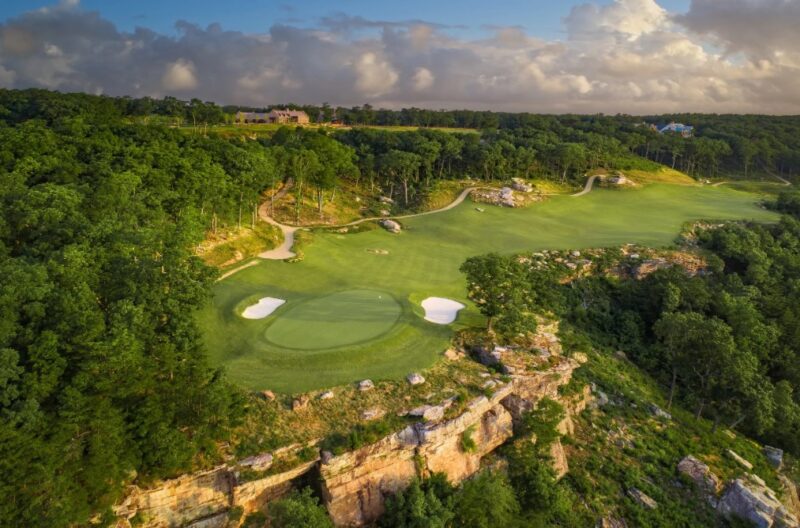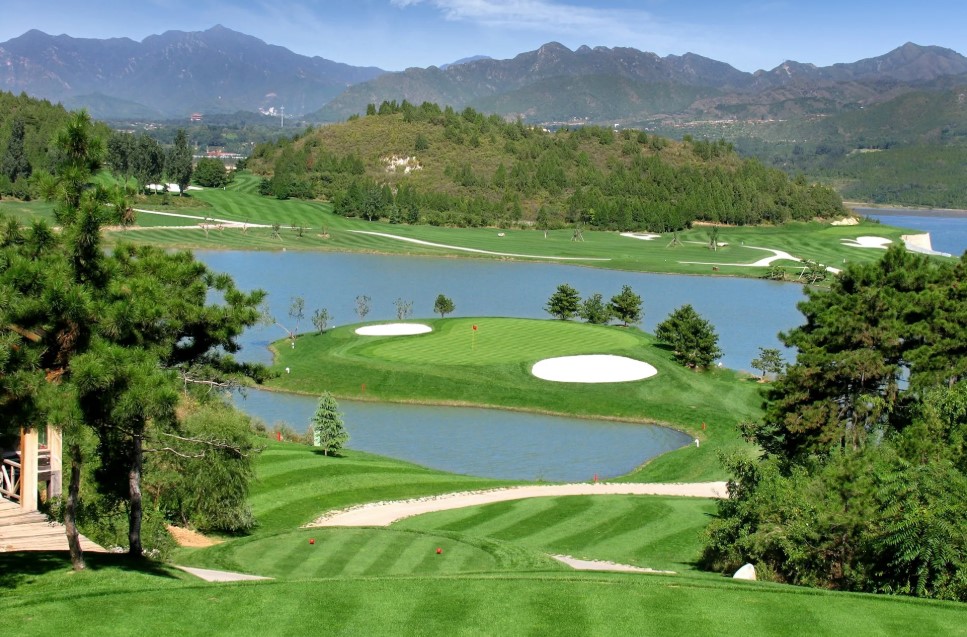When planning a golf course, one of the biggest questions developers, investors, or even golf enthusiasts ask is: how much land do you actually need? The answer is not universal because it depends on what kind of course you want, how ambitious your amenities are, and even the natural shape of the terrain.
Still, there are clear benchmarks and professional standards that guide course architects worldwide. Knowing these details upfront helps avoid costly mistakes and provides a realistic picture of the investment required.
Standard Size for a Full Course
The iconic 18-hole golf course is considered the gold standard for both professional and recreational play. To design a course of this scale, you generally need between 150 and 200 acres of land. This includes the holes themselves as well as safety buffers, water features, and walking or cart paths. On average, about 100 acres are devoted strictly to the playable area, tees, fairways, greens, and roughs, while the remaining acreage supports landscaping, environmental features, or protective zones to separate holes from each other.
This size is not arbitrary. The length of the holes, the sequencing of play, and the need for variety in challenges all require space. A par-72 course typically stretches around 6,500–7,200 yards, and fitting that distance into the landscape demands room for creative routing. While it is technically possible to compress an 18-hole course into around 120 acres, doing so often results in narrow fairways, repetitive holes, or safety concerns.
For reference:
- Championship course: 150–200 acres, suitable for professional events.
- Resort course: 180–220 acres, usually built with scenic surroundings and additional leisure amenities.
- Compact course: 120–140 acres, designed for efficiency but less expansive.
Factoring in Amenities and Extra Space

The playable holes themselves only tell part of the story. A modern golf course is rarely just about the game. To make the facility attractive and financially viable, most developers include a range of amenities, and these require significant extra space.
- Clubhouse ─ Beyond the building itself, the surrounding landscaping, parking lots, and event spaces can take up 10–15 acres.
- Driving range and practice areas ─ Golfers expect facilities to warm up before a round. A full-length driving range with multiple practice greens may need 15–20 acres.
- Hospitality and resort features ─ If the course is part of a destination resort, restaurants, spas, or lodging may easily extend the project by another 50–100 acres.
- Maintenance and operations ─ Behind the scenes, you need storage areas for carts, irrigation systems, equipment, and staff facilities. These take up several acres, even though players rarely notice them.
Because of these additional requirements, resort-style courses often exceed 200 acres in total land size.
Balancing Land Size With Visibility
Even if you design the perfect course, it needs to be seen and played to succeed. Marketing plays a role almost as important as land and design. Modern golf facilities invest not only in turf and architecture but also in digital presence.
Building visibility on platforms such as SocialWick.Com allows a course to reach wider audiences, attract memberships, and generate buzz in competitive markets. This strategic promotion ensures that the large investment in land and development translates into long-term financial sustainability.
Influence of Terrain and Location
Terrain can dramatically shift land requirements. If you build on flat farmland, you may need more space to create varied challenges, relying heavily on water hazards and bunkering to keep things interesting. In contrast, rolling hills or coastal cliffs provide natural drama and allow architects to compress the course into fewer acres without sacrificing quality.
Location also matters in terms of land cost and availability. Courses in the American Midwest or Australian countryside often sprawl comfortably over 200 acres because land is abundant and affordable. On the other hand, courses in densely populated regions like Japan or the United Kingdom sometimes fit into 120 acres or less, using creative routing and steep terrain to add excitement.
Environmental restrictions also influence usable acreage. Wetlands, forests, or protected habitats may reduce playable space but enhance the course’s beauty and ecological value.
Environmental and Regulatory Considerations

Golf courses are often scrutinized for their environmental impact. Water use, pesticide application, and land clearing are sensitive issues. Modern regulations may require you to dedicate portions of the land to conservation, water retention ponds, or wildlife corridors. These areas contribute to the total land requirement but are not directly playable.
Designers today embrace sustainable practices, such as:
- Using drought-resistant turf grasses.
- Reducing chemically intensive maintenance.
- Preserving native vegetation to reduce irrigation needs.
- Installing efficient water recycling systems.
These considerations can add to the land footprint but are crucial for long-term environmental and community acceptance.
Cost Implications of Land Size
Land cost is often the single largest line item in a golf course project. The difference between building on 120 acres and 200 acres is not only about land purchase but also about ongoing maintenance. Larger courses mean more grass to cut, more water to irrigate, and more staff to employ.
Typical ranges include:
- Rural land: $5,000–$10,000 per acre.
- Suburban land: $15,000–$50,000 per acre.
- Resort destinations: $100,000+ per acre.
That means the initial land purchase alone could vary from a few million dollars in rural areas to tens of millions in prime resort locations. Developers must weigh whether the prestige of a championship-sized course justifies the higher acquisition and upkeep costs.
The Importance of Efficient Design

Course architects now prioritize efficiency. By carefully routing holes, reusing fairways, and sharing tees or greens where appropriate, they reduce land requirements while maintaining variety. Narrower fairways, shorter roughs, and thoughtful landscaping also allow courses to fit comfortably into smaller footprints.
Some communities have adopted mixed-use developments, where golf courses serve as central greenbelts within housing projects. This design offsets costs by blending real estate value with golf amenities, ensuring the land serves multiple purposes beyond recreation.
Final Thoughts
The short answer is that you need around 120–200 acres to build a full 18-hole golf course, with 9-hole layouts requiring half that and par-3 courses fitting into even smaller parcels. The true number depends on your ambitions: whether you want a simple local club or a world-class resort destination with luxury facilities.
Ultimately, the land is more than just acreage. It is the canvas that shapes the playing experience, defines the environmental impact, and anchors the financial future of the project. Developers who carefully balance size, amenities, marketing, and sustainability are the ones who create golf courses that endure both as businesses and as cherished landscapes.

